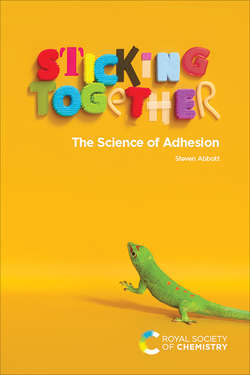Читать книгу Sticking Together - Steven Abbott - Страница 33
На сайте Литреса книга снята с продажи.
3.7 SOLDERING
ОглавлениеAnother form of liquid glue is molten solder. If you solder badly (as I have done rather too many times), the result is a pure surface adhesion bond that can look OK and which gives adequate strength if you give it a vertical pull, but which fails when there is a peel force. Good soldering is more than surface adhesion. First, it requires the use of a “flux” that dissolves and/or “reduces” the oxide contaminants on the surface to produce the native metal. Then the metals in the solder need to join up with the metal (typically copper) to create a metallic bond, i.e. where electrons are shared across all the metal atoms. This will still not provide a tough joint because the electrons are shared unequally across dissimilar metals and there is a clear boundary where stresses can concentrate and a crack can propagate. The trick is that the molten tin in the solder is able to dissolve (not melt!) a few of the surface atoms from the copper. This means that the boundary is tin/tin-copper/copper which, by not being a sharp boundary, is more able to cope with crack stresses.
Brazing is somewhat similar. Two high melting point components (usually steel) are separated by a narrow gap. Molten metal (typically copper) with a lower melting point is made to flow into the gap. On cooling there is a solid metal bond. As with solder, there is a need for a flux to remove the oxides from the metal surfaces. The use of lower melting point metals means that there is less thermal strain on the components, and the brazed area can be larger than a welded joint, leading to a more distributed set of stresses. The bonding metal is of higher melting point and modulus than the necessarily more gentle solder, resulting in a bond that is likely to be more durable than soldering.
